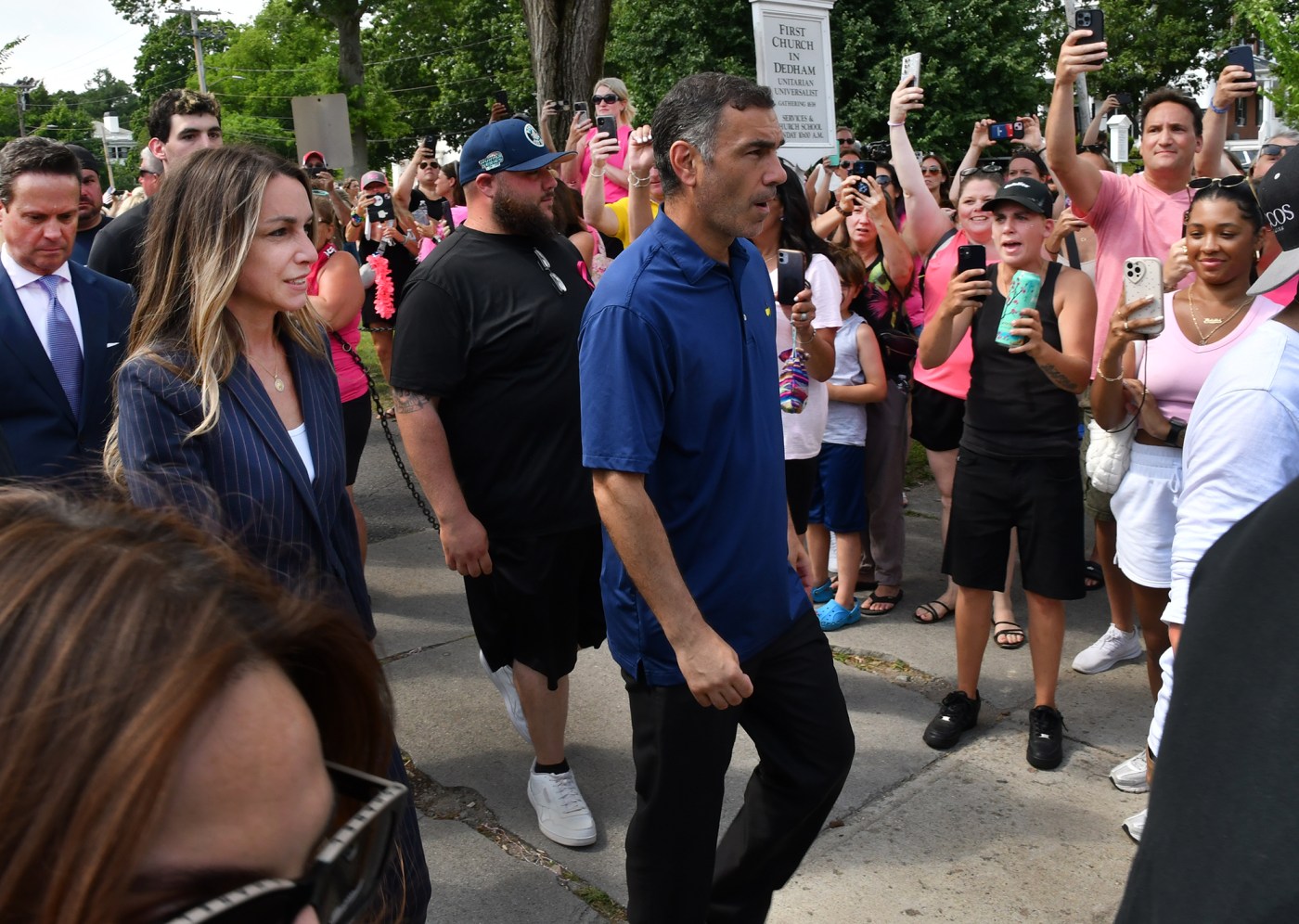
Karen Read murder case: Expanded buffer zone prevails, federal judge rules
A lawn next to Norfolk Superior Court will remain off limits for protests during Karen Read’s second murder trial as a federal judge has upheld an expanded buffer zone days before opening statements are expected to start.
U.S. District Judge Myong J. Joun has rejected a motion from four Read supporters that sought to block enforcement of Superior Court Judge Beverly Cannone’s buffer zone order and a restoration of their First Amendment rights.
Joun upheld Cannone’s order on Friday, finding that the plaintiffs’ complaint failed to amount to a temporary restraining order being granted.
Four Massachusetts residents — Jason Grant, Allison Taggart, Lisa Peterson and Samantha Lyons — brought forward the complaint, arguing their protests outside the courthouse have been “peaceful, lawful, and entirely protected by the First Amendment.”
Cannone approved a request from prosecutors that a buffer zone be reinstated for the second murder trial with an expansion that includes where supporters often gathered for the first go-around last year.
Attorney Marc Randazza in a supplemental brief filed on Thursday requested the federal court to issue an order that the buffer zone had been created “unconstitutionally in violation of the Fourteenth Amendment and it functions as a violation of the First Amendment.”
Randazza highlighted how the plaintiffs are not a “party in the state case,” or the Read murder case, and that the defendant “expressly took no position on the Buffer zone.”
In his ruling, Joun stated the buffer zone for the second trial is “content neutral, narrowly tailored to serve a significant government interest, and leaves open ample alternative channels for communication.”
“Plaintiffs have not demonstrated a likelihood of success on the merits of their First Amendment claim,” Joun wrote.
Before last year’s trial, the blocks surrounding the Superior Court in Dedham developed a carnivalesque atmosphere. Read supporters would gather in droves, holding signs, chanting and making their presence known.
The buffer zone did not prevent a crowd from growing and supportive honking from passersby, which special prosecutor Hank Brennan argued jurors could hear from the courtroom.
Cannone approved Brennan’s request for the revised buffer zone for round two, citing the possibility of Read’s “right to a fair trial” being “jeopardized” due to the outside factors.
The Massachusetts Supreme Judicial Court upheld the buffer zone for the first trial last year after Read supporters initially looked to overturn the order, keeping proponents and detractors at least 200 feet away from the courthouse.
Randazza argued that if the “true goal of the buffer zone is to limit noise, then after a proper hearing and with proper authority, let us see a zone of silence around the courthouse.”
“But one has to ask, ‘why now?’ Why not make it permanent, for every trial? Judge Cannone or her counsel can answer that question,” Randazza stated in his supplemental argument. “But if the problem here is truly a concern about tainting the jurors, the jurors can certainly be protected from noise while protesters stand quietly with signs outside the building.”
Assistant Attorney General John R. Hitt countered that Cannone “tried other available alternatives” last year, rejecting a 500-foot buffer zone that the prosecution requested. He argued that plaintiffs failed to “grapple with the problem of noise being created in response to Plaintiffs’ signs or their physical gestures while they quietly protest.”
“Because jurors would be aware that this unusual and incessant honking is a result of strong outside opinions about the murder trial on which they are sitting,” Hitt stated in his supplemental briefing, “it could affect their ability to be impartial or cause unnecessary disruptions to, or interference with, the ongoing proceedings.”
Sixteen jurors – eight women and eight men – have been selected for the second trial which Read hinted to reporters last week could begin with opening arguments on Tuesday.
The case will resume on Monday in efforts to try to get even more jurors for the final pool, according to Clerk James McDermott. The jurors have a long trial ahead of them, with Cannone telling prospective jurors at the start of each day could take as long as eight weeks.


